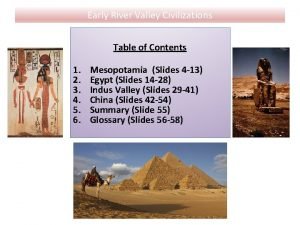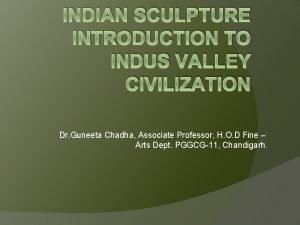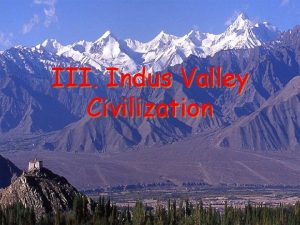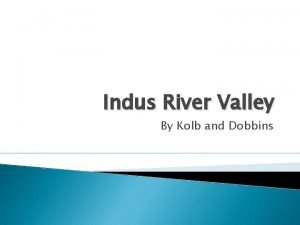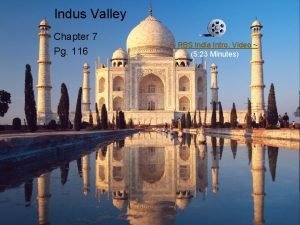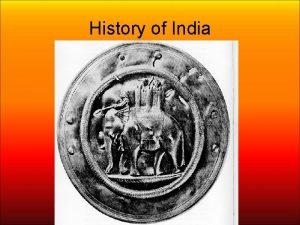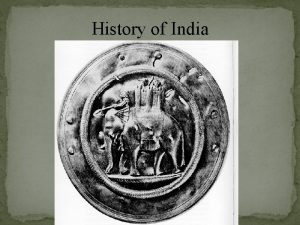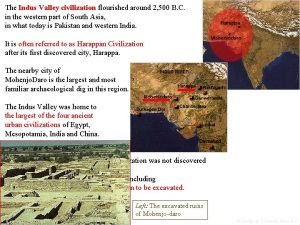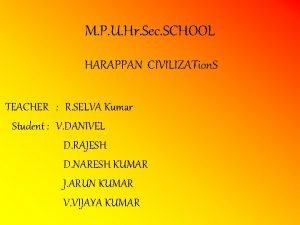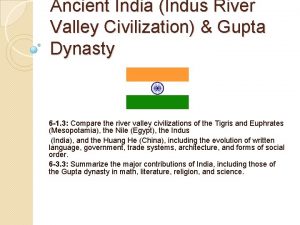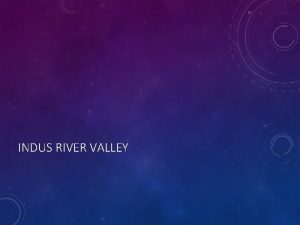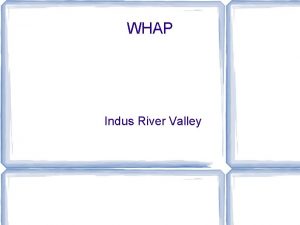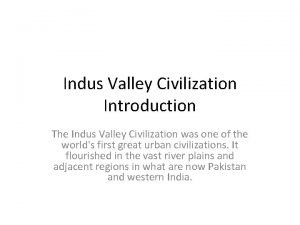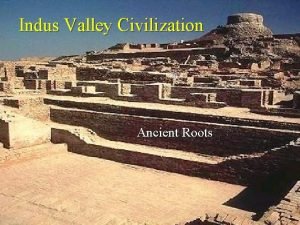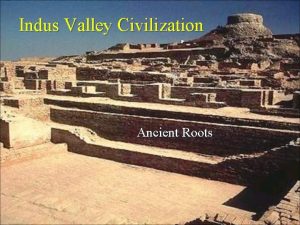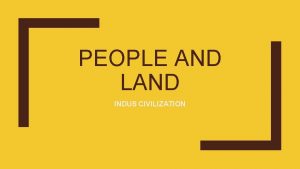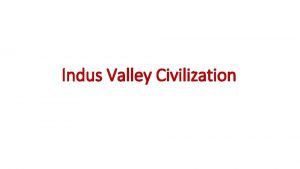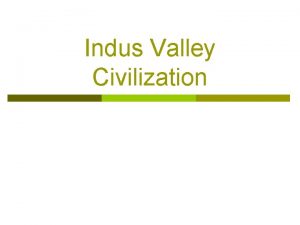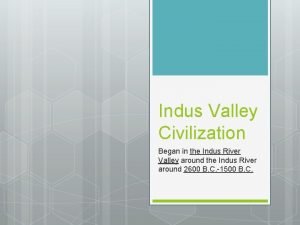INDUS RIVER VALLEY CIVILIZATION The Indus River Valley












- Slides: 12

INDUS RIVER VALLEY CIVILIZATION

The Indus River Valley Civilization started about 2500 B. C. E. along the south-western part of the Indus River. The largest city was Mohenjo-Daro, in present day Pakistan, and settlements stretched all along the river.


Impact of Geography Large Area Stretches across present day India, Pakistan, Bangladesh, Nepal, Sri Lanka, and Bhutan Surroundings Natural borders consisted of mountains and the Arabian Sea, sheltering the civilization from attack and disease. Water from the river fertilized and irrigated crops. Proximity to the river allowed boats to become a viable transportation option

Economy Agriculture The development of widespread irrigation systems allowed the indigenous population to provide food for themselves. Wheat and barley were primary crops, however rye, peas, cotton, and rice were also grown. Domestication of animals also served as an important tool for cultivation and as a source of food.

Economy Trade The economy depended greatly on trade. Trade was conducted within the civilization as well as with Mesopotamia. Advancement in technology led to carts and early boats that were used as the main method of trade and travel.

Social Structure Caste system with four main classes People were born into social classes that could not be changed. • Brahmins (priests and the king) • Kshatriyas (warriors and aristocrats - rulers) • Vaishyas (cultivators, artisans, and merchants) • Shudras (peasants and serfs)

Buildings/Structures • Individual buildings for bathing and using the restroom (had an early "sanitation" system) • Citadels were used for defense • All houses had access to water and were about the same size • Houses had one or two stories--Most buildings were made of dry bricks

Tools • Constructed from bronze and possibly copper and iron • Clay was utilized for both art and tool manufacturing • Developed a measuring system and tools for measurement (first, and most precise of the time)

Weapons • Constructed from bronze • Weaponry was not as advanced as it was in the Mesopotamian society • Swords were not developed • Isolated geography negated the need for advanced weaponry

• • Technology Large irrigation systems First civilization in the world to develop precise measurement and weighing equipment Most technology was used to aid in agriculture Other trade technologies such as boats and carts were employed to facilitate trade

Religion • Hinduism Polytheistic • Buddhism Way of life (Buddha)
 Mesopotamia technology
Mesopotamia technology Introduction about indus valley civilization
Introduction about indus valley civilization Indus valley civilization
Indus valley civilization Economy of indus civilization
Economy of indus civilization Indus valley civilization period
Indus valley civilization period Natural resources of indus valley civilization
Natural resources of indus valley civilization Ancient egypt medicine
Ancient egypt medicine Economy of indus valley civilization
Economy of indus valley civilization Indus valley civilization trade and economy
Indus valley civilization trade and economy Conclusion of indus valley civilization
Conclusion of indus valley civilization The indus valley civilization flourished around
The indus valley civilization flourished around Education of indus valley civilization
Education of indus valley civilization Caste system in indus valley civilization
Caste system in indus valley civilization
